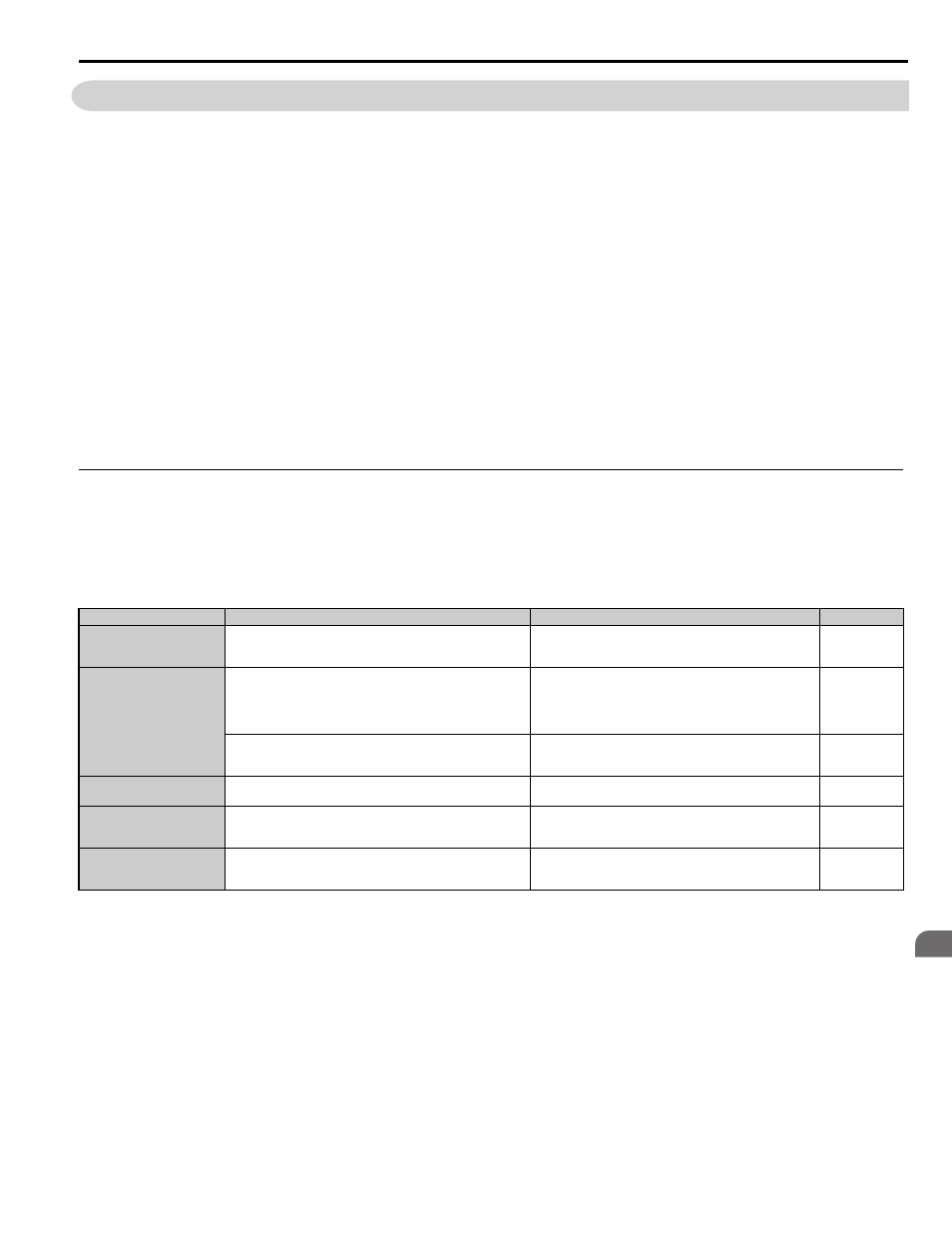2 inspection, Recommended daily inspection – Yaskawa L1000E AC Drive Technical Manual for CIMR-LE Models for Elevator Applications User Manual
Page 311

7.2 Inspection
YASKAWA ELECTRIC SIEP YAIL1E 01A YASKAWA AC Drive L1000E Technical Manual
311
Pe
ri
od
ic
In
spe
ct
io
n
&
Main
tenan
ce
7
7.2 Inspection
Power electronics have limited life and may exhibit changes in characteristics or performance deterioration after years of
use under normal conditions. To help avoid such problems, it is important to perform preventive maintenance and
periodic inspection on the drive.
Drives contain a variety of power electronics such as power transistors, semiconductors, capacitors, resistors, fans, and
relays. The electronics in the drive serve a critical role in maintaining proper motor control.
Follow the inspection lists provided in this chapter as a part of a regular maintenance program.
Note: The drive will require more frequent inspection if it is placed in harsh environments, such as:
• High ambient temperatures
• Frequent starting and stopping
• Fluctuations in the AC supply or load
• Excessive vibrations or shock loading
• Dust, metal dust, salt, sulfuric acid, chlorine atmospheres
• Poor storage conditions.
Perform the first equipment inspection one to two years after installation.
◆ Recommended Daily Inspection
outlines the recommended daily inspection for Yaskawa drives. Check the following items on a daily basis to
avoid premature deterioration in performance or product failure. Copy this checklist and mark the “Checked” column
after each inspection.
Table 7.1 General Recommended Daily Inspection Checklist
Inspection Category
Inspection Points
Corrective Action
Checked
Motor
Inspect for abnormal oscillation or noise coming from the motor.
• Check the load coupling.
• Measure motor vibration.
• Tighten all loose components.
Cooling
Inspect for abnormal heat generated from the drive or motor and
visible discoloration.
Check for excessive load.
• Excessive load.
• Loose connections.
• Dirty heatsink or motor.
• Ambient temperature.
Inspect drive cooling fan and circulation fan operation.
Check for the following:
• Clogged or dirty fan.
• Correct fan operation parameter setting.
Environment
Verify the drive environment complies with the specifications listed
in
Installation Environment on page 40
Eliminate the source of contaminants or correct poor
environment.
Load
The drive output current should not be higher than the motor or drive
rating for an extended period of time.
Check for the following:
• Excessive load.
• Correct motor parameter settings.
Power Supply Voltage
Check main power supply and control voltages.
• Correct the voltage or power supply to within nameplate
specifications.
• Verify all main circuit phases.